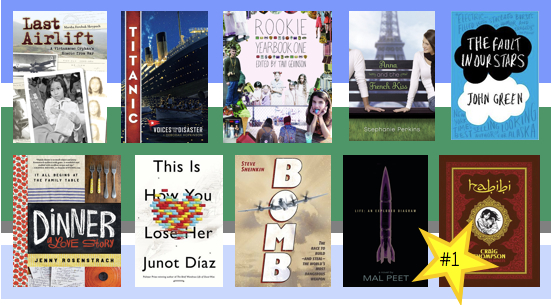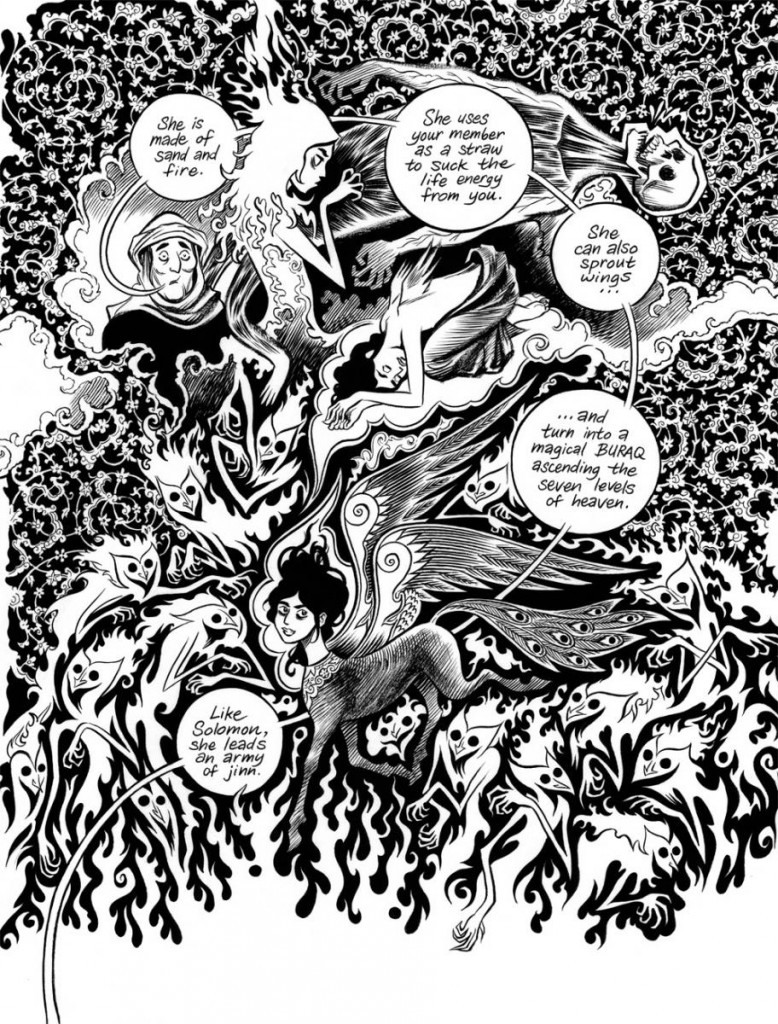#1: Habibi by Craig Thompson
I read Craig Thompson’s Blankets many, many years ago. I had never read a graphic novel before, didn’t really know that such a thing existed. Comics were about superheroes, were slim, made of crunchy paper as far as I was concerned. I was too busy falling in love to be surprised that Blankets was none of the above – it was a doorstop of a book full of thick lined illustrations, teenagers in love, and a protagonist that was just the kind of boy that I wished would jump off the page and just love me already.
It took Thompson seven years to complete his next book – Habibi. I was excited, but wary. From the descriptions, it sounded like a completely different story. When I find an author I love, I hope that they will keep making great books, but maybe I also hope they will keep making the same book. An autobiographical coming of age graphic novel told in the Midwestern USA begets another. Habibi was fiction – fantastic fiction, nonetheless! – about non-Western culture. I was wary.
Change of scene: Christmas Day 2011 at my parents’ house. Just like any other Christmas of my life, the day is fun because A) I get to lounge around in your pajamas all day with your family B) I get to eat delicious foods and C) there are new games to play, books to read, CDs to listen to, blankets to cuddle under, movies to watch, etc. You will never be bored on Christmas Day.
But unlike any other Christmas day before it, all I want to do on December 25th, 2011, is read a library book. Habibi.
The story is set in a fictionalized present-day Islamic world – a setting that feels more like a desert, timeless, fairytale landscape than anything else. Our protagonist is Dodola, a very young girl who has been sold into marriage to a much older man, a scribe, who teaches her to read, to write, and the relationship between stories and words to their shared religion. Dodola is kidnapped, but manages to escape and finds refuge with a very young boy – Zam – who has escaped slavery of his own; the two form a family, holed up together in a wooden ship stranded in the desert, growing up together and surviving together, even when that survival means making unspeakable sacrifices.
Over the course of the novel, Dodola and Zam are children and they are adults. They love each other as family and sexually. They are separated and reunited. They are powerful and powerless. Dodola saves Zam and Zam saves Dodola, each in turn. They travel through the desert, into fairytale-like palaces, and then urban slums. They come together, they come apart, and their story is interwoven with stories from the Q’uran, stories Dodola and Zam both turn to in their times of need. Epic is probably the only appropriate word for this story.
But all plot aside, the art. Oh, the art! What Thompson has done with his art is nothing short of breathtaking. Is there such thing as epic art? Yes, and it is here. From the end papers on through all 700+ pages, each spread is a dream, a fantasy – ornate and embellished with dizzying patterns.The single and double page spreads are a particular joy; the art extends to the edge of the page, making you want to stare into each piece until you’re certain you’ve gotten all you can from each one.
I’ve had friends and professors tell me that reading graphic novels should take longer than prose, because it takes time to take in each image and how it relates to the text, how the story moves from panel to panel. I, however, am more prone to flip through them like I’m eating a bag of chips – enjoying but not necessarily nourishing myself or feeling great about the whole greasy mess. As I entered my second day of reading Habibi, I started to think that my preference for haste had been proven wrong. But then again, maybe I’d just never encountered a graphic novel that begged me not just to read, but savor.
And with that, we have reached the end of the 2012 Best Reads Extravaganza! I am exhausted. If you missed any posts, check out this page to catch up. Thanks for playing along friends – I hope y’all had as pleasant a Reading Year as I did!

